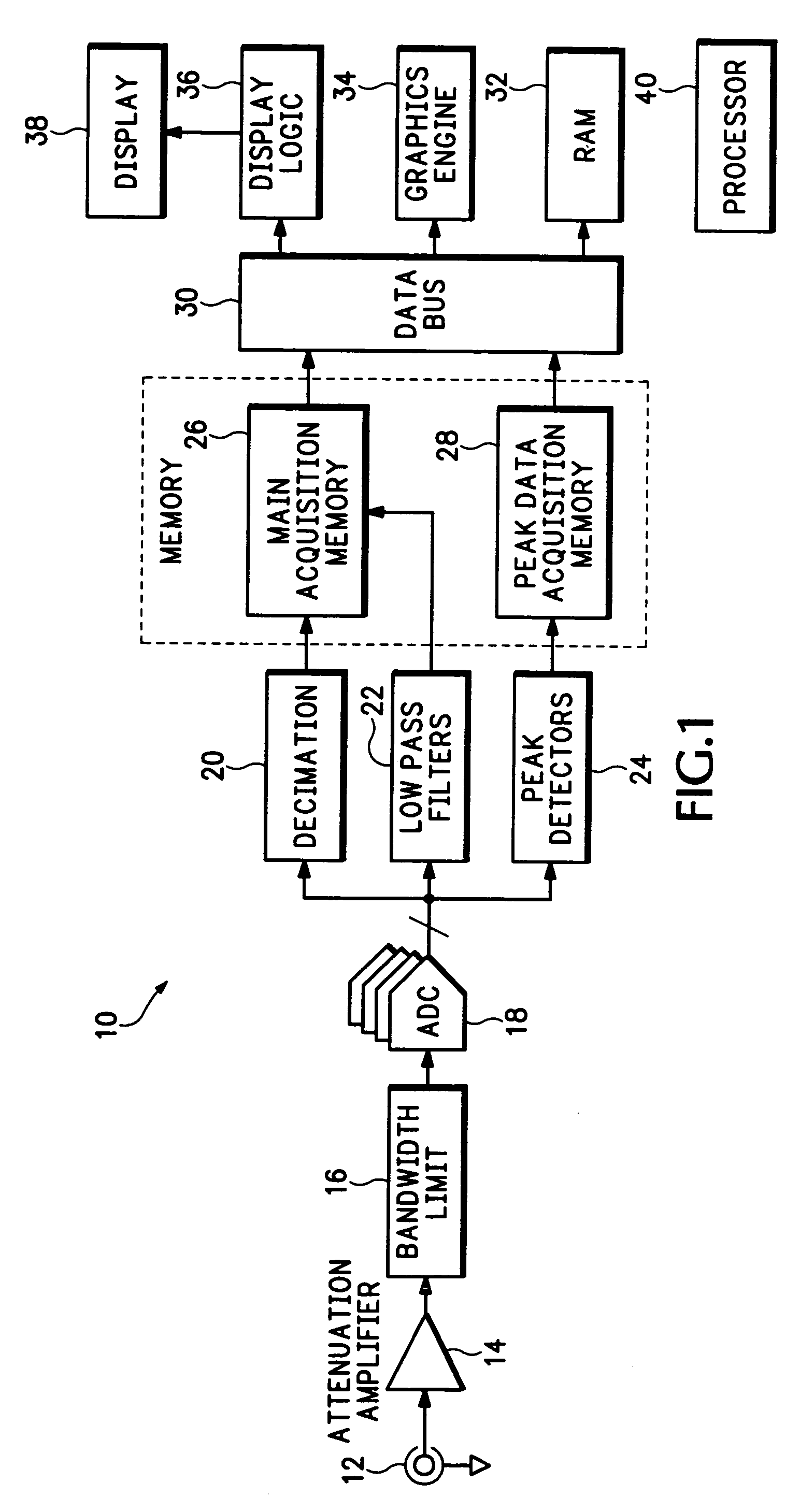Waveform compression and display
a waveform and display technology, applied in the field of waveform compression and display, can solve the problems of limited usable compression schemes, serious drawbacks of each of these schemes, and the quantity of data may exceed the memory availabl
- Summary
- Abstract
- Description
- Claims
- Application Information
AI Technical Summary
Benefits of technology
Problems solved by technology
Method used
Image
Examples
Embodiment Construction
[0031]Referring now to FIG. 1 a digital oscilloscope 10 is shown having an input port 12 for receiving an electrical signal. The electrical signal from the input port 12 is input to an attenuator amplifier 14, a bandwidth limiter 16 and one or more analog-to-digital converters (ADCs) 18. The resulting digitized electrical signal in the form of data samples is input to three different compression modules in parallel—a conventional decimator 20, lowpass filters 22 and a peak detector 24. The decimated and lowpass filtered data samples from the decimator 20 and lowpass filters 22 are stored in a main acquisition memory 26, and the peak detect data samples from the peak detector 24 are stored in a peak data acquisition memory 28. The main acquisition memory 26 and the peak data acquisition memory 28 physically may be part of the same memory, as is well known in the art. Also the peak data acquisition memory 28 may be shorter in length than the main acquisition memory 26. The data sample...
PUM
 Login to View More
Login to View More Abstract
Description
Claims
Application Information
 Login to View More
Login to View More - R&D
- Intellectual Property
- Life Sciences
- Materials
- Tech Scout
- Unparalleled Data Quality
- Higher Quality Content
- 60% Fewer Hallucinations
Browse by: Latest US Patents, China's latest patents, Technical Efficacy Thesaurus, Application Domain, Technology Topic, Popular Technical Reports.
© 2025 PatSnap. All rights reserved.Legal|Privacy policy|Modern Slavery Act Transparency Statement|Sitemap|About US| Contact US: help@patsnap.com



